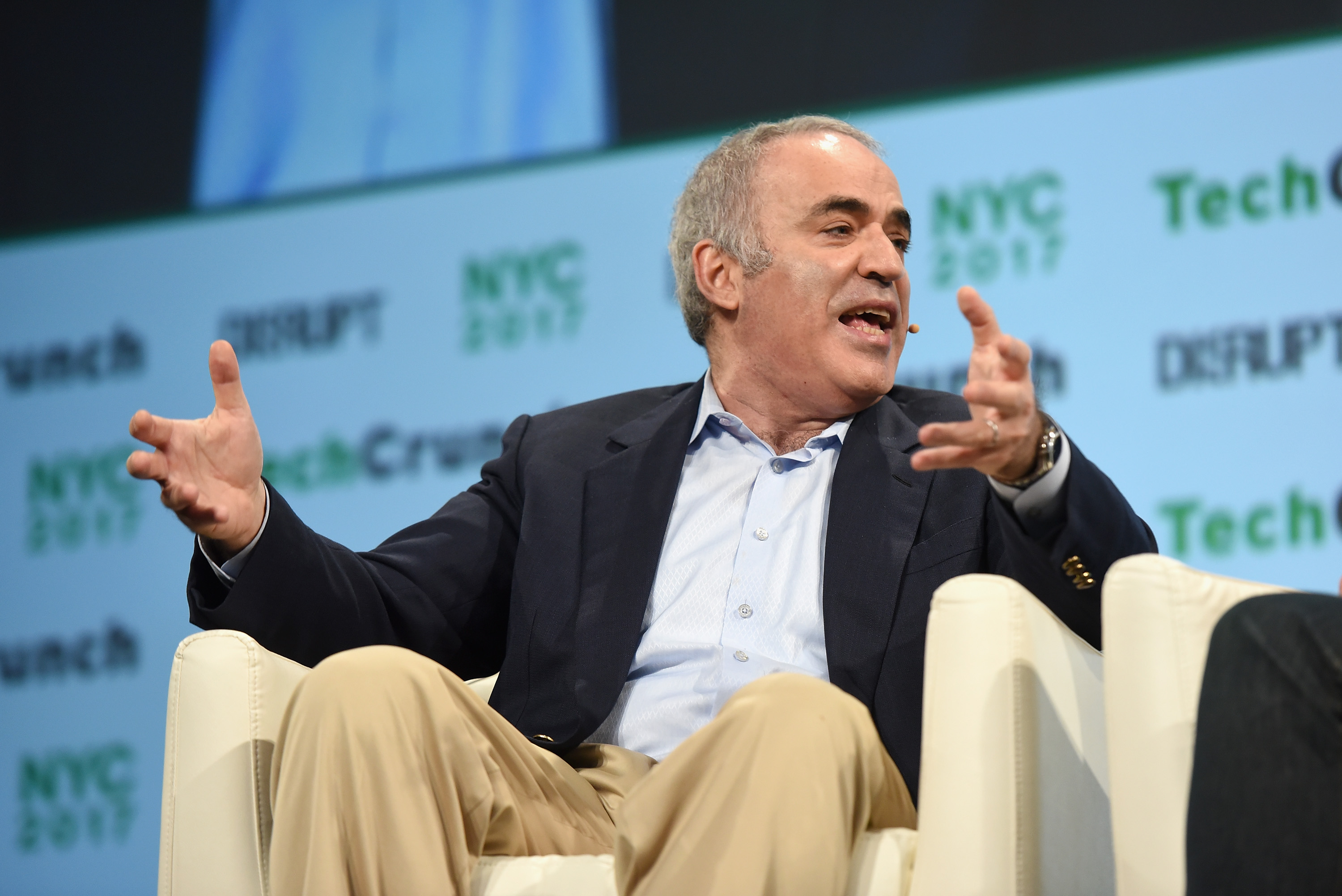Have you ever heard about the Chess Grandmaster, Gary Kasparov?
Well, until the 1980s, no one in the world could beat Gary in the game of chess. He would also claim that there would be no chess programs that could beat his mastermind. In 1989, when IBM developed the chess programs, Deep Thought, Gary challenged to win them all, contributing to his mastery. He did win both the games against the machine. In 1996, Gary defeated IBM’s successor, Deep Blue with 4:2; a game of six.
However, it was startling to see him lose a game in a tournament, to a chess program, i.e. Deep Blue, an IBM Chess Program. This victory of Deep Blue gave the world a remarkable start of the development of chess programs which can beat the masterminds of chess. The intuitive, superior game was creative in a number of ways, which began to gain a reputation in the world of humans.
Although, it was very difficult for Gary to swallow the pride and accept his defeat against a chess program. To cover it all up, he started spreading a rumour about IBM misplaying and cheating the game. Back then (two decades from now), it was extremely difficult for a human eye to believe that a machine was programmed to play a superior game of chess by developing its own intuitive strategy in its creative ways and mastering all the chess moves of a Chess Grandmaster.
From then on, the new world of AI and chess opened up opportunities for many IT companies. Magnus Carlsen, another chess champion, remarked on the power and milestones of AI-based chess. He also acknowledged the efforts of the programmers who were able to develop a chess program which can beat masterminds in the world.
The rise of Chess Programs
What makes chess complex is that it has a more number of moves than the drops of water in an ocean or grains of sand in the beaches. However, this game of problems can be solved by Minimax algorithm, based on which different programs were developed.
Like any humans, the machines are also first taught about the movements of each piece, castling, the role of the King and how to checkmate the opposition king. These programs are also fed with promotion and en passant, so that they are fully equipped to play the game, empowering them to be a mastermind with no confusion, whatsoever.
It was in 1946 when Alan Turing developed his handmade records for a chess computer. Later, Claude Shannon developed a principle as follows:
- Every chess piece was rewarded with points such as:
- Pawn =1
- Knight = 3
- Bishop = 3.5
- Rook= 5
- Queen = 10
- King = 100
- The counter moves of both black and white parties were closely examined. When white made one move, then all the black moves were examined along with subsequent white moves. This examination was carefully conducted until there were no more moves to play.
- For the final results, the party with the highest number of number (as per the pieces) won the match.
In 1951, a program was developed which could solve the problems in less than 15minutes by the University of Manchester for Ferranti Mark 1 computer.
John von Neumann’s defined chess as a zero-sum, two-person game and developed a program in the mid-1950s which was run on a MANIAC 1 tube computer. To begin with it, the board was only 6×6 instead of 8×8. This program could only play three games, and it won against a woman who has been training and practising chess for a week to play against this program.
During those early times, computer power was limited, and the database was another problem. Chess is not merely a program of a few moves, every game is different, and every move needs strategic planning. Although, even in 2020, the program developers struggle in writing chess games, owing to its visible intensity of the game.
In 1967, the first program was developed to beat a human in a chess tournament was Mac Huck. It took two years for Richard Greenblatt to develop this developer to checkmate Hubert Dreyfus finally.
Many more developers started taking interest to build a chess program and were able to produce more than 18k moves in a single second. Ken Thompson developed Belle, a chess machine that worked as an open library and a hash map. This machine continued to dominate the market until 1983 when it was rewarded as the National Chess Champion by US Chess Federation.
A scientific genius, Feng-Hsiung Hsu, entered the world of technology to develop an AI-built Chess which made all the grandmasters including Kasparov, weep!
To beat Belle, IBM developed Deep Blue under the expert guidance of a computer genius, Feng-Hsiung Hsu. They won a match in 1997 against Gary Kasparov, changing the entire game and market of chess across the world.
In 2004, a chess program called Stockfish was developed which could search 60 million positions in a second. This reduced the burden and time of the grandmasters, who would evaluate the moves and conduct the assessment. Now, with this chess engine, the process was easy and smooth, whether the grandmasters liked it or not.
How AI-built Chess Program Changed the Face of Chess
Then a self-teaching, intuitive program was developed by DeepMind, which swept the entire chess market called Alpha Zero in 2015. Being a self-learning program without any chess library, this was always progressing as it played chess games. This program was developed to empower Alpha Zero to learn by exploring a variety of chess games so that it can self-learn based on new challenges.
In 2016, AlphaZero was trained for 4 hours before playing a game against Stockfish 8. This intense training gave AlphaZero cutting-edge skills so that it improvised every game that it played and ensured to win.
The developers of AlphaZero remarked that as it played the more quickly it played its games, the program would develop itself more reliably in the game of chess. This is because its algorithms were exposed to different game strategies and new moves, hence enabling it to secure its winning position.
Unlike other chess programs, Alpha Zero evaluates its position based on its chances of winning rather than per piece value. In this process, the chess program may even sacrifice a few pawns in order to win and increase its own score at the end.
Human players on another end, always calculate minute details which may sometimes bring mistakes and risks. However, Alpha Zero develops a promising situation through its strength, and thus it could bet all the chess developed programs to date.
In 2018, during the world chess championship in London, the chess game between Norway’s Magnus Carlsen and American’s Fabino Caruana was evaluated by AlphaZero. The chess evaluators didn’t appreciate this as now a machine was performing their job. But, the positive aspect of quickly evaluating the moves was always undermined as humans take time to accept good things.
What makes AlphaZero distinct, is its human-like style, implementing its idea in every game that it plays. This reinforced learning makes it efficient, progressive rather than being idle and playing the same set of ultimate moves. This technically advanced chess program thus began its journey to become friends with the grandmasters by helping them deploy a winning game strategy.
Another fascinating It is fascinating to note that AlphaZero can combine both minor accidents and incidents to develop a new game strategy. This was achieved by deep neural network architecture. AlphaZero will first try to weaken the King’s position and then use this as a motif to win the game.
AlphaZero can optimize any position in its favour through its creativity and never-tiring characteristics. Unlike traditional engines, AlphaZero was not only the master of calculating-heavy positions but in calculating intricate positions, giving positional insights and planning long-term, i.e. for the ultimate checkmate.
AlphaZero also takes all the cautions to not land in a passive and losing condition, and this was the driving factor throughout the game, which the techs believed that this is how it won its game.
As the world saw the rise of Chess programs, grandmaster Gary Kasparov started admiring these programs. The strength of these chess programs, originality surprised Kasparov. This is a game of superhuman experts, but AlphaZero found its undisputed space where its self-learning methodology is startling. Through its valuable network architecture, AlphaZero could beat any Chess Grandmaster. These machines have been developed to play the ultimate chess mate moves in a perfect way, which enables the human to learn from them.
The day will soon be near when the Chess Championship shall use AlphaZero to find a winning pathway. Many Chess champions already practice their game with AlphaZero to learn a new strategy, optimize their losing position and build an unexpected weakening position of the opponent.


